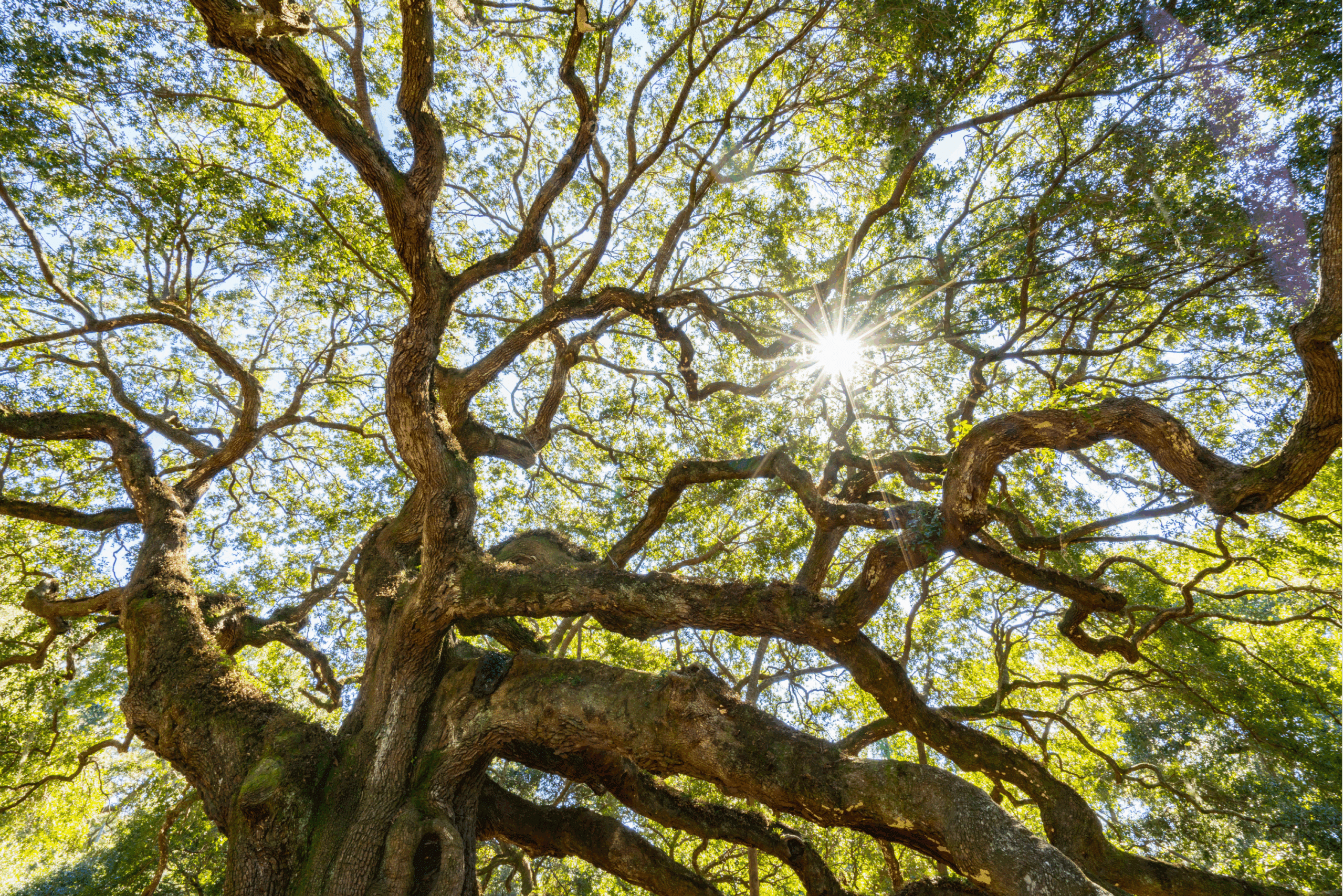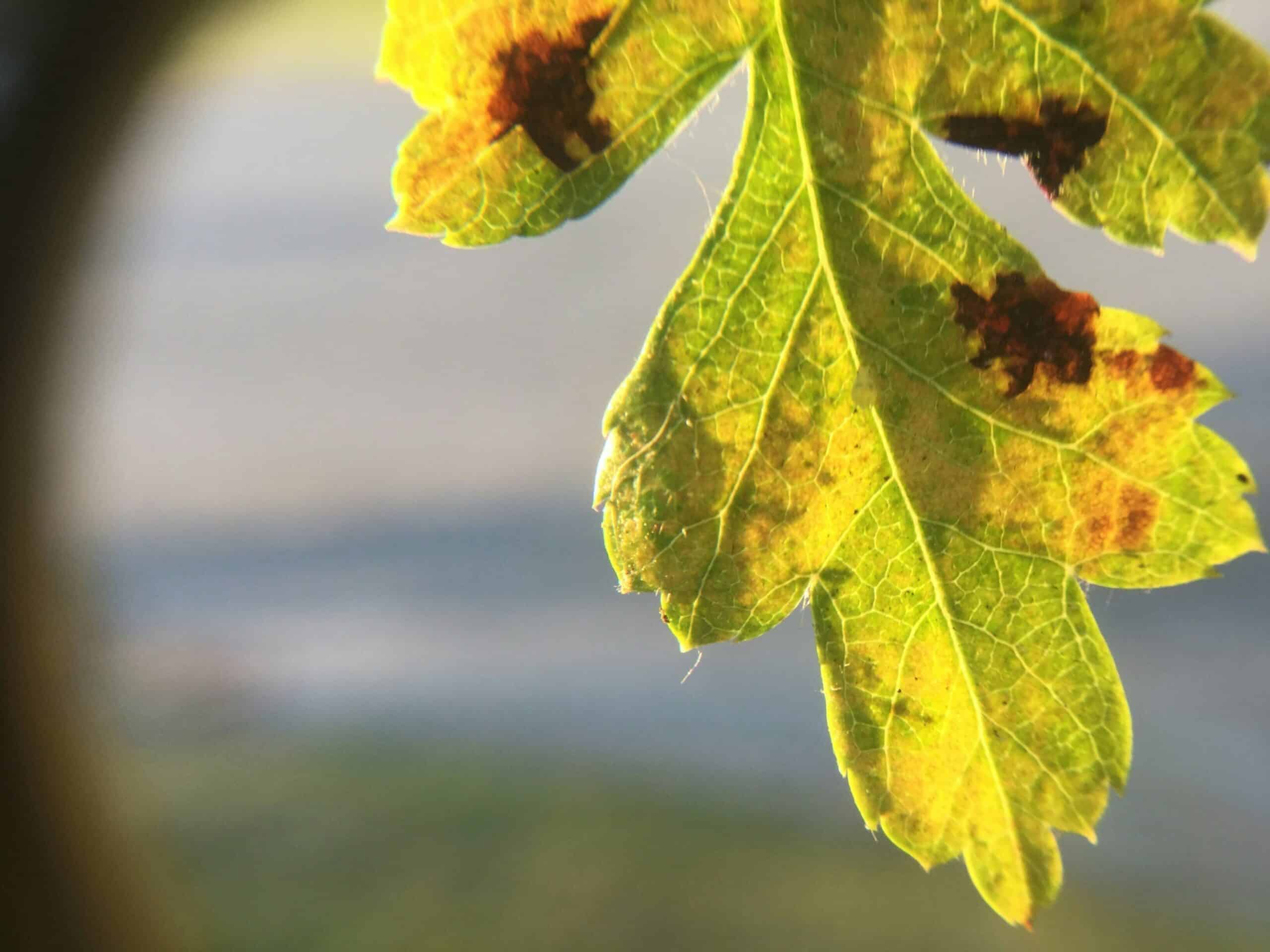
Date July 22, 2025
Category
In North Texas, where summer temperatures regularly soar above 100°F and rainfall patterns grow increasingly unpredictable, selecting the right drought-resistant trees has become essential for property owners.
As climate conditions continue to shift, homeowners and businesses alike are searching for sustainable landscaping solutions that can withstand harsh weather while maintaining aesthetic appeal. At TreeNewal, we understand the unique challenges of our regional climate and have compiled this comprehensive guide to help you select tree species that will thrive despite limited water resources.
The right drought-resistant trees not only survive but flourish in North Texas, providing valuable shade, habitat for wildlife, and increased property value with minimal irrigation requirements. This guide explores native and adapted species that have proven their resilience in our challenging climate, along with practical advice for successful planting and maintenance.
How North Texas Climate Trends Impact Tree Survival
North Texas experiences a unique set of climate challenges that directly impact tree health and sustainability. The region typically faces hot, dry summers with temperatures frequently exceeding 100°F for extended periods. Annual rainfall, while averaging around 35-40 inches, often comes in sporadic, intense bursts rather than consistent patterns.
This combination creates stress for many traditional landscape trees. Climate data from recent years shows concerning trends. According to meteorological records from 2020-2024, North Texas has experienced increasingly severe drought conditions, with some years seeing rainfall deficits of 10+ inches below normal.
Water restrictions have become commonplace during summer months, limiting irrigation options for landscaping. Urban heat island effects in densely populated areas like Dallas-Fort Worth further compound these challenges. Research from Texas A&M Forest Service indicates that urban areas can be 5-9 degrees warmer than surrounding rural areas, placing additional thermal stress on trees.
This makes selecting naturally drought-tolerant species even more critical for long-term landscape sustainability. For property owners in North Texas, understanding these climate realities is the first step toward creating resilient landscapes that can withstand challenging conditions while conserving precious water resources.
As specialists in tree care, TreeNewal has witnessed firsthand how proper species selection dramatically improves survival rates during extreme weather events.
Best Native Drought-Tolerant Trees for Landscapes in North Texas
Native trees have evolved specifically to thrive in our local conditions, making them naturally adapted to the region’s climate challenges. These species have developed specialized mechanisms to survive periods of drought while maintaining their aesthetic and ecological value.
Live Oak (Quercus virginiana)
The Live Oak stands as one of the most resilient native trees in North Texas. With its broad, spreading canopy and impressive drought tolerance, this evergreen oak species can survive extended dry periods once established.
Live Oaks typically grow 40-50 feet tall with spreads of 60-70 feet, providing exceptional shade coverage. Their deep root systems allow them to access groundwater even during drought conditions, and they require minimal supplemental irrigation after their establishment period (typically 2-3 years).
Their acorns provide valuable food for wildlife, enhancing backyard biodiversity. With lifespans exceeding 300 years, these magnificent trees represent a true investment in your property’s future.
Texas Red Oak (Quercus buckleyi)
This deciduous oak species delivers stunning fall color along with impressive drought tolerance. Reaching heights of 30-35 feet, Texas Red Oaks develop moderate canopies that provide dappled shade while requiring minimal water.
Their vibrant autumn foliage displays brilliant red to burgundy colors that enhance landscape appeal. Texas Red Oaks are particularly valuable in North Texas landscapes because they resist oak wilt better than many other oak species, as documented in studies by the Texas A&M Forest Service. Their moderate size makes them suitable for smaller properties where larger oaks might overwhelm the space.
Cedar Elm (Ulmus crassifolia)
The Cedar Elm represents another outstanding native selection, combining drought tolerance with adaptability to various soil types. These deciduous trees typically reach 50-70 feet in height with vase-shaped canopies that provide excellent shade.
Cedar Elms have demonstrated remarkable resilience during recent drought years compared to non-native alternatives. Their small, serrated leaves turn a pleasant yellow-gold in fall before dropping, and they require minimal maintenance once established.
Cedar Elms also show good resistance to Dutch elm disease, which has devastated other elm species across North America.
Mexican White Oak (Quercus polymorpha)
Also known as Monterrey Oak, this semi-evergreen species offers exceptional drought tolerance while maintaining an attractive appearance. Growing to heights of 40-50 feet with comparable spreads, Mexican White Oaks develop rounded canopies that provide substantial shade. Their bluish-green foliage adds unique visual interest to the landscape.
These trees establish quickly compared to other oak species and demonstrate excellent heat resilience. Studies conducted by the Texas Agricultural Experiment Station confirm their superior drought tolerance compared to many commonly planted landscape trees in the region.
Top Non-Native Trees That Thrive in Drought-Prone North Texas
While native species offer many advantages, several non-native trees have proven their adaptability to North Texas conditions over decades of observation. These well-adapted species complement our native palette while expanding design options for drought-resistant landscapes.
Chinese Pistache (Pistacia chinensis)
This medium-sized deciduous tree combines drought tolerance with spectacular fall color. Growing 30-35 feet tall with similar spreads, Chinese Pistache develops a rounded crown that provides excellent shade. Its compound leaves turn brilliant orange, red, and crimson in autumn, creating a striking visual impact.
Chinese Pistache has demonstrated exceptional heat and drought tolerance during recent extreme weather events. Research conducted in 2023 by urban forestry programs showed that these trees maintained a healthy appearance even when irrigation was reduced by 60% compared to standard recommendations.
Lacebark Elm (Ulmus parvifolia)
Also called Chinese Elm, this adaptable tree offers excellent drought resistance with minimal pest problems. Growing 40-50 feet tall with graceful, arching branches, Lacebark Elms provide filtered shade that supports understory plantings. Their most distinctive feature is the beautiful mottled bark that exfoliates in patches of gray, green, orange, and brown.
These elms establish quickly and demonstrate excellent tolerance for urban conditions, including poor soils, air pollution, and limited water availability. Their resistance to Dutch elm disease makes them reliable long-term landscape investments.
Desert Willow (Chilopsis linearis)
For smaller spaces, Desert Willow provides drought resistance in a more compact package. Typically growing 15-25 feet tall, this multi-trunked small tree produces stunning trumpet-shaped flowers throughout summer. The blooms attract hummingbirds and butterflies, enhancing garden biodiversity.
Despite its name, Desert Willow isn’t a true willow but rather a member of the Bignonia family. It thrives in full sun with minimal irrigation and performs better with limited water once established. Its graceful, willow-like foliage provides a soft texture in the landscape while demanding very little maintenance.
Planting Tips That Maximize Tree Survival in Drought
Selecting appropriate species represents only part of the equation for successful drought-resistant landscaping. Proper planting techniques significantly impact tree establishment and long-term performance in challenging conditions.
The planting process begins with timing. In North Texas, fall (October through December) represents the optimal planting window for most tree species. This timing allows roots to establish during cooler months before facing summer heat. Spring planting (February through April) provides a secondary opportunity when fall planting isn’t possible.
Proper hole preparation dramatically impacts success rates. Research from Texas A&M University shows that planting holes should be 2-3 times wider than the root ball but no deeper than the root ball height. This approach encourages lateral root expansion while preventing settlement issues that compromise tree health.
When backfilling, use native soil without amendments. While counterintuitive to many gardeners, this practice encourages roots to expand beyond the planting hole rather than circling within amended soil. Remove all burlap, wire baskets, and container materials that might restrict root growth or introduce foreign materials into the soil.
Initial watering practices significantly impact establishment success. Consider these guidelines:
- Water thoroughly immediately after planting
- Apply 3-4 inches of organic mulch in a circle 3 feet wider than the canopy, keeping mulch 3-4 inches away from the trunk
- Water deeply (but infrequently) during the first two growing seasons
- Gradually reduce irrigation frequency as trees establish
Proper placement within the landscape also affects drought resilience. Position trees to receive morning sun and afternoon shade when possible, especially for less drought-tolerant species. This minimizes water stress during the hottest part of the day.
For properties with serious water concerns, consider TreeNewal’s summer pest control guide for North Texas, which includes strategies for maintaining tree health during periods of water stress.
Essential Tree Care Practices to Maximize Drought Resilience
Even naturally drought-resistant species require proper care to reach their full potential, especially during establishment and extreme weather events. Implementing appropriate maintenance practices ensures these resilient trees thrive throughout their lifespans.
Water Management Strategies
Established drought-tolerant trees require far less water than traditional landscape plants, but strategic irrigation during extreme conditions protects your investment. Deep, infrequent watering encourages roots to grow downward into soil layers that retain moisture longer. For most established drought-resistant trees, watering once every 2-4 weeks during extreme drought provides sufficient support.
The most effective watering technique uses drip irrigation or soaker hoses placed at the canopy drip line rather than near the trunk. This placement supports healthy root development, where most active water absorption occurs. Water should penetrate 12-18 inches into the soil during each irrigation session.
Soil moisture monitors provide valuable data for informed irrigation decisions. These simple devices indicate when soil has dried sufficiently to warrant additional water, preventing both over-irrigation and drought stress. Many North Texas municipalities offer rebates for moisture-sensing irrigation equipment as part of water conservation initiatives.
Mulching for Water Conservation
Proper mulching represents one of the most effective and affordable strategies for drought management. Organic mulches like shredded hardwood, pine straw, or composted leaves provide the following benefits:
- Reduce soil moisture evaporation by up to 70%
- Suppress competitive weeds that steal water resources
- Moderate soil temperature extremes
- Improve soil structure as they decompose
- Reduce compaction from rainfall impact
Maintain a 3-4 inch mulch layer extending to the drip line of the tree canopy, keeping mulch pulled back 3-4 inches from the trunk to prevent moisture-related bark diseases. Refresh mulch annually as decomposition naturally reduces depth over time.
Pruning Considerations
Drought-stressed trees benefit from specific pruning approaches. During extreme drought, minimize pruning to essential safety concerns only, as pruning creates wounds that require energy to heal. When pruning is necessary, remove dead, diseased, or crossing branches to improve air circulation and reduce pest habitat.
For established drought-resistant trees, maintain their natural form rather than imposing artificial shapes that could disrupt their structure or stress the canopy. For more pruning guidance tailored to specific species and North Texas conditions, explore TreeNewal’s guide to the best shade trees for North Texas.
Soil Health Management
Healthy soil biology significantly enhances drought resilience. Incorporate compost into the top few inches of soil beneath the canopy (avoiding disturbance of major roots) to improve microbial activity. Beneficial soil fungi, particularly mycorrhizae, form symbiotic relationships with tree roots that dramatically improve water absorption efficiency.
Avoid compacting soil beneath tree canopies by limiting foot traffic, equipment operation, and material storage in these zones. Compacted soil restricts water infiltration and root expansion, compromising drought tolerance even in naturally resilient species.
How to Help Established Trees Survive Prolonged Drought Stress
While North Texas has always experienced periodic drought, climate projections suggest increasing frequency and severity of extreme dry periods. Protecting valuable mature trees during these events requires specific intervention strategies beyond routine maintenance.
When severe drought strikes, prioritize which trees receive limited water resources. Native, drought-adapted species generally require less emergency intervention than non-native varieties. However, even naturally drought-resistant species may need support during unprecedented conditions, particularly if they’re young or recently transplanted.
Temporary shade structures can reduce transpiration stress for vulnerable trees during extreme heat waves. Simple shade cloth suspended on the west side of young trees reduces afternoon heat load considerably, conserving internal moisture. For established trees showing drought stress, professional arborists may recommend canopy thinning to reduce transpiration demands while preserving overall tree structure.
Soil-injected hydrogels represent an emerging technology for drought management. These water-absorbing polymers, when properly placed in the root zone, can increase water retention capacity significantly. Research from Texas Tech University’s Drought Management Center indicates that certain hydrogel formulations can reduce irrigation requirements by 30-40% while maintaining comparable tree health.
Monitoring for secondary threats becomes especially important during drought periods. Weakened trees face increased vulnerability to insect pests, particularly borers that target stressed trees. Regular inspection for early signs of pest activity allows prompt intervention before infestations become established. The arborists at TreeNewal offer professional monitoring services that identify potential issues before they compromise tree health.
For valuable established trees showing significant drought stress, consulting with certified arborists provides targeted intervention strategies that may save these irreplaceable landscape assets. As documented in the rapid decline of post oaks in North Texas, early professional intervention often determines whether stressed trees recover or succumb to challenging conditions.
Common Questions About Drought-Resistant Tree Selection and Care
How long does it take for drought-resistant trees to establish in North Texas?
Most drought-resistant tree species require 2-3 years to become fully established in North Texas landscapes. During this establishment period, regular deep watering remains essential even for naturally drought-tolerant varieties.
Smaller species (under 30 feet at maturity) typically establish more quickly than larger trees. The critical establishment phase occurs during the first growing season when root systems expand into native soil. Providing consistent moisture during this period dramatically improves long-term drought resilience by encouraging deep, extensive root development.
After establishment, irrigation frequency can be gradually reduced as trees demonstrate self-sufficiency through healthy seasonal growth patterns.
Can I convert my existing landscape to more drought-resistant tree species?
Yes, transitioning to drought-resistant species can be accomplished through strategic phased replacement rather than wholesale removal. Begin by identifying the most water-demanding or struggling trees in your current landscape.
Replace these first with appropriate drought-resistant alternatives, allowing them to establish before addressing less problematic existing trees. This approach maintains landscape continuity while gradually improving water efficiency.
When selecting replacement species, consider mature size, growth rate, and visual characteristics that complement remaining landscape elements. Professional consultation helps identify which existing trees might perform adequately with reduced irrigation versus those that should be prioritized for replacement.
What is the best season to plant drought-resistant trees in North Texas?
Fall (October through December) represents the optimal planting window for drought-resistant trees in North Texas. During this period, soil temperatures remain warm enough for root growth while cooler air temperatures reduce transpiration stress.
This combination allows trees to establish root systems before facing summer heat challenges. Fall-planted trees typically develop up to 60% more root mass by summer compared to spring-planted specimens, according to research from Texas A&M Forest Service.
If fall planting isn’t possible, early spring (February through mid-April) provides a secondary opportunity before summer heat arrives. Avoid planting during summer months (June through September) when establishment requirements conflict with water conservation needs.
How can I tell if my established trees need supplemental water during drought?
Early signs of drought stress include leaf wilting during afternoon hours (even with recovery overnight), premature yellowing of inner or lower leaves, leaf size reduction in new growth, and unusual leaf drop during the growing season.
More severe indicators include branch dieback starting at the outermost tips, cracking bark, and premature fall color. Monitoring soil moisture at 6-12 inches deep provides a more objective assessment. If the soil feels dry and crumbly at this depth, supplemental water is likely needed even for drought-resistant species.
Remember that mature, established trees may not show visible stress until conditions become severe, making preventive monitoring essential for protecting these valuable landscape assets.
Are there drought-resistant trees that also provide good fall color for North Texas landscapes?
Several drought-resistant tree species offer excellent fall color in North Texas while maintaining water efficiency. Texas Red Oak (Quercus buckleyi) displays brilliant red to burgundy autumn foliage, Chinese Pistache (Pistacia chinensis) provides spectacular orange to crimson displays, and Shantung Maple (Acer truncatum) exhibits vibrant yellow to red fall transitions.
Bigtooth Maple (Acer grandidentatum), native to Texas Hill Country, offers reliable orange-red fall color with impressive drought tolerance once established. For smaller landscapes, Flame-leaf Sumac (Rhus lanceolata) combines extreme drought tolerance with stunning scarlet autumn foliage. These selections prove that water-efficient landscapes need not sacrifice seasonal color interest.
Strengthen Your Landscape with Trees Built for Drought
As North Texas continues experiencing climate challenges, drought-resistant tree selection represents a critical adaptation strategy for sustainable landscapes. By incorporating native species like Live Oak and Cedar Elm alongside adapted non-natives such as Chinese Pistache and Desert Willow, property owners can create resilient, water-efficient environments that thrive despite limited resources.
Proper planting techniques, strategic maintenance practices, and informed drought management strategies further enhance tree success during challenging conditions. With thoughtful species selection and appropriate care, North Texas landscapes can remain beautiful and functional while conserving precious water resources for generations to come.
Contact TreeNewal for Expert Drought-Resistant Tree Planning
TreeNewal is North Texas’s trusted partner in sustainable tree care. With years of experience in regional climate challenges, our ISA Certified Arborists provide tailored recommendations for tree selection, planting, and ongoing maintenance, ensuring your landscape not only survives but thrives.
Whether you’re starting from scratch or looking to improve an existing landscape, we’ll help you build a beautiful, resilient outdoor space with trees that stand up to Texas heat and drought. Contact TreeNewal today for a consultation and get the expert guidance your trees deserve.









